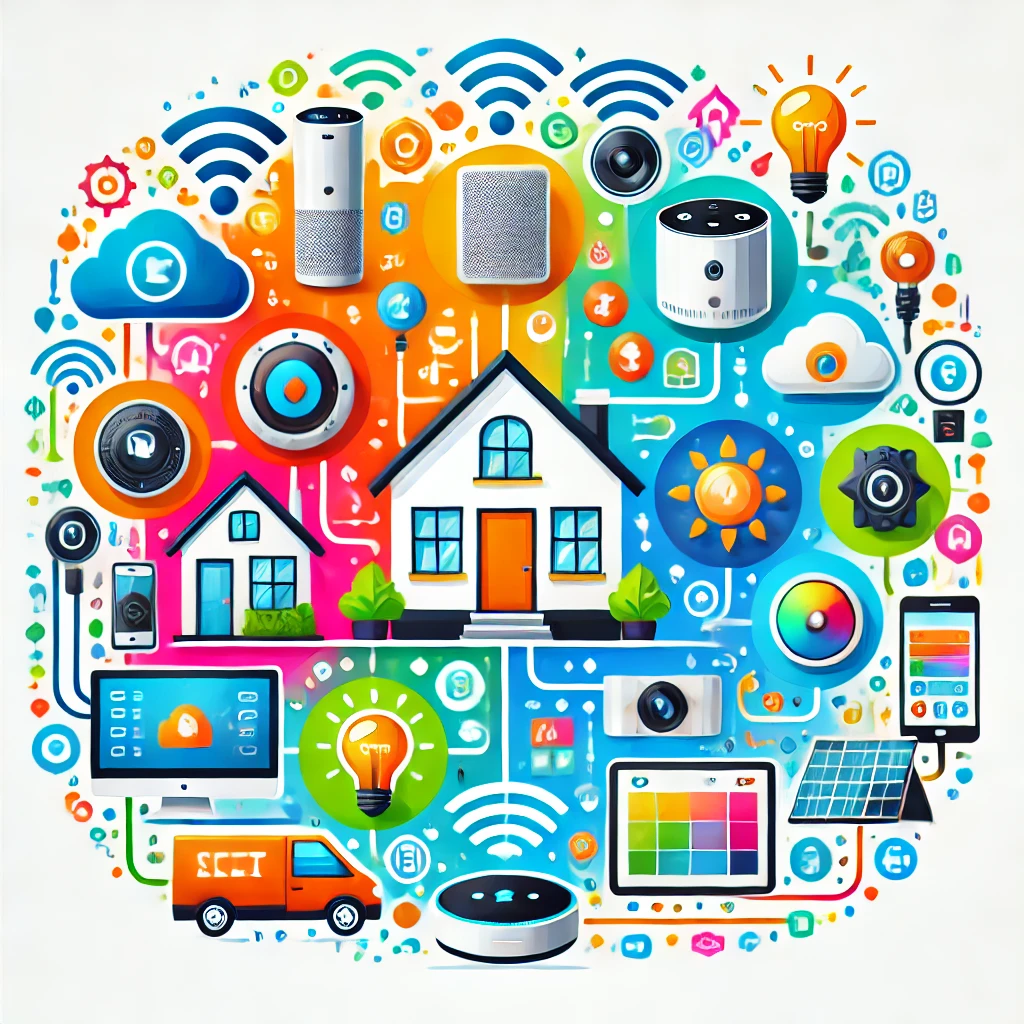The Evolution of Smart Home Technology

Smart home technology has come a long way from its early beginnings, evolving from simple automation to highly interconnected systems that offer convenience, security, and energy efficiency. This technology enables homeowners to control various aspects of their homes, such as lighting, temperature, security, and entertainment, through smart devices and voice assistants. As technology continues to advance, smart homes are becoming increasingly sophisticated and user-friendly, transforming the way we live.
Early Beginnings of Smart Home Technology
The concept of smart homes dates back to the mid-20th century when automation first began to make its way into households. Early home automation mainly involved appliances and devices with timers and basic remote controls, such as automatic garage door openers and timed coffee makers. The introduction of the first programmable thermostat in the 1980s marked a significant step toward automated home systems.
However, smart home technology did not gain significant momentum until the late 1990s and early 2000s, when the internet and wireless communication became more accessible. The emergence of Wi-Fi and the Internet of Things (IoT) laid the foundation for connecting household devices to a network, enabling remote control and monitoring.
The Rise of IoT and Connected Devices
The advent of IoT in the early 2010s marked a turning point for smart home technology. IoT allows everyday objects to connect to the internet and communicate with each other, making it possible for smart devices to be integrated into a single system. This connectivity enabled homeowners to control multiple aspects of their homes, such as lighting, temperature, and security, using a single app or voice command.
During this period, major technology companies such as Google, Amazon, and Apple began investing in smart home ecosystems. The introduction of smart speakers like Amazon Echo (powered by Alexa) and Google Home (powered by Google Assistant) made voice-controlled automation a reality. These smart assistants allowed users to control various devices, set reminders, and even order groceries, making smart homes more accessible to the average consumer.
Advancements in Smart Home Technology
Smart home technology continued to evolve with the introduction of more advanced features and functionalities:
1. Voice Control and AI Integration
The integration of artificial intelligence (AI) into smart home systems has enabled more sophisticated voice control and automation. AI-powered voice assistants like Alexa, Google Assistant, and Apple’s Siri can learn user preferences over time, making personalized recommendations and automating routine tasks. For example, a smart assistant can recognize when a user typically arrives home from work and automatically adjust the thermostat, turn on the lights, and start playing music.
2. Enhanced Security Systems
Smart home security has evolved beyond basic alarm systems to include advanced features such as video doorbells, smart locks, and motion detectors. These devices can be monitored remotely through smartphone apps, allowing homeowners to keep an eye on their property while away. Features like facial recognition, geofencing, and real-time notifications have also improved the effectiveness of smart security systems, providing greater peace of mind.
3. Energy Efficiency and Smart Thermostats
Energy management is a key aspect of modern smart home technology. Devices like Nest and Ecobee smart thermostats enable users to optimize their home’s energy consumption by learning their schedule and adjusting the temperature accordingly. Smart lighting systems, such as Philips Hue, can also help reduce energy usage by allowing users to control lights remotely, set schedules, and adjust brightness levels based on natural light.
4. Entertainment and Smart Media
Smart home technology has made entertainment more seamless and interconnected. With smart TVs, streaming devices, and smart speakers, users can control their media experience through voice commands or smartphone apps. Multi-room audio systems allow music to be played throughout the house, while smart displays can integrate with other devices to show real-time information, such as weather updates, security camera feeds, or video calls.
Integration and Interoperability
As the number of smart devices continues to grow, the need for integration and interoperability has become crucial. Initially, many smart home products operated in isolation, requiring separate apps and platforms for control. However, the industry is moving towards more unified ecosystems where multiple devices can be managed through a single interface.
Platforms such as Apple HomeKit, Google Home, and Samsung SmartThings have emerged to provide centralized control for smart home devices. Additionally, the development of standard protocols like Matter aims to improve device compatibility across different brands, ensuring a smoother and more cohesive user experience.
The Impact of 5G on Smart Homes
The rollout of 5G technology is expected to have a significant impact on smart home advancements. With higher data speeds and lower latency, 5G enables faster communication between smart devices, allowing for real-time responses and enhanced automation. This will lead to the development of more advanced smart home applications, such as high-quality video streaming from security cameras and more responsive voice assistants.
The Future of Smart Home Technology
Looking ahead, smart home technology is expected to become even more integrated, intelligent, and personalized. Future advancements may include:
- Increased AI Capabilities: AI will continue to play a central role in smart homes, with systems becoming more predictive and capable of automating complex tasks based on user behavior.
- Health Monitoring: Smart home technology may expand to include health monitoring features, such as detecting changes in vital signs, fall detection for the elderly, and air quality monitoring to ensure a healthy living environment.
- Sustainable Living Solutions: With a growing emphasis on sustainability, smart homes will incorporate more eco-friendly solutions, such as energy management systems that optimize the use of renewable energy sources and smart water management systems.
Conclusion
The evolution of smart home technology has transformed the way we live, offering greater convenience, security, and energy efficiency. As the technology continues to advance, smart homes are becoming more accessible, integrated, and intelligent, paving the way for a future where everyday tasks are automated, and home environments are tailored to individual preferences. With ongoing innovations in AI, IoT, and connectivity, the smart home industry is poised for continued growth and development, shaping the homes of tomorrow.





